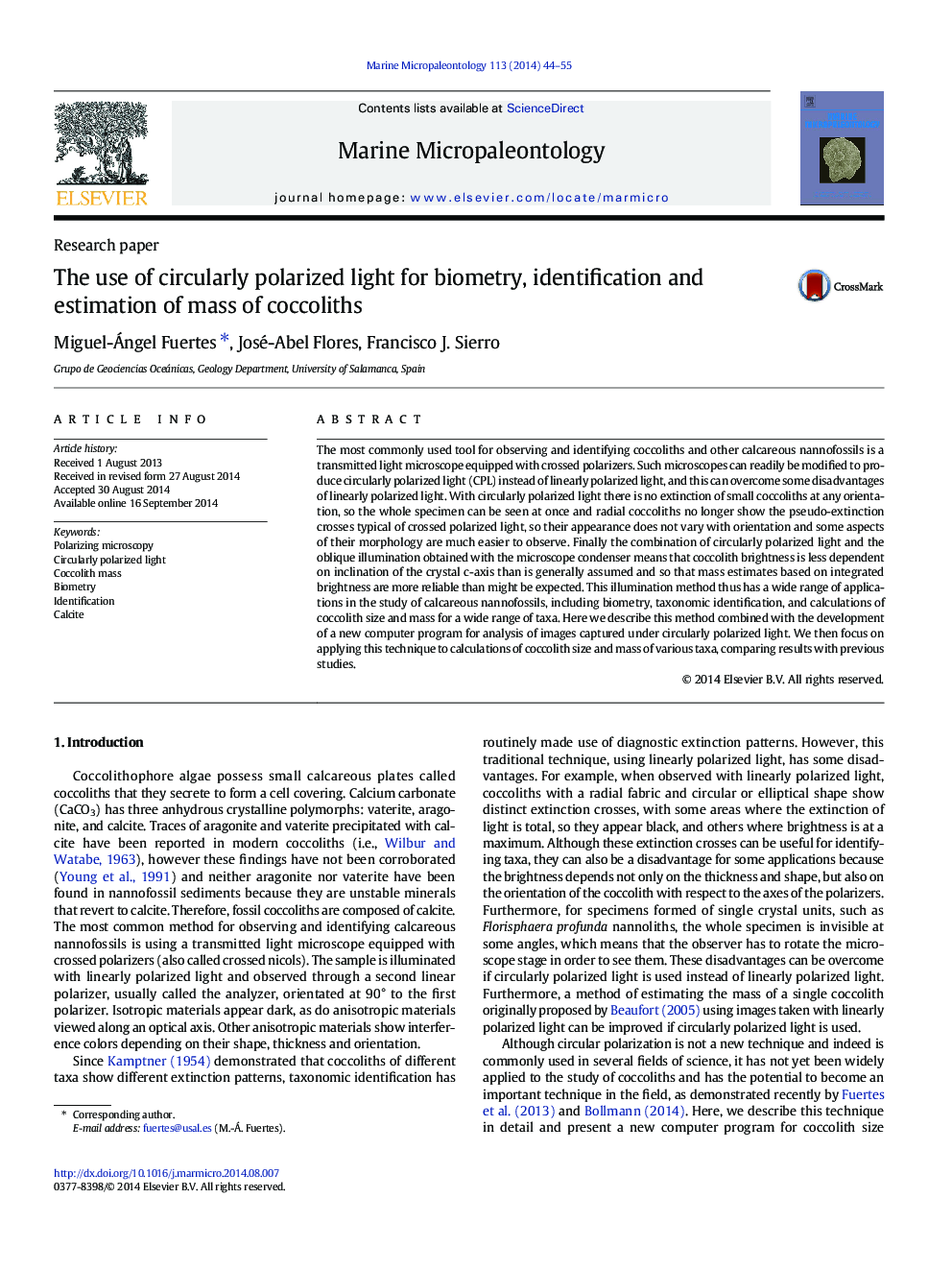| Article ID | Journal | Published Year | Pages | File Type |
|---|---|---|---|---|
| 6448540 | Marine Micropaleontology | 2014 | 12 Pages |
Abstract
The most commonly used tool for observing and identifying coccoliths and other calcareous nannofossils is a transmitted light microscope equipped with crossed polarizers. Such microscopes can readily be modified to produce circularly polarized light (CPL) instead of linearly polarized light, and this can overcome some disadvantages of linearly polarized light. With circularly polarized light there is no extinction of small coccoliths at any orientation, so the whole specimen can be seen at once and radial coccoliths no longer show the pseudo-extinction crosses typical of crossed polarized light, so their appearance does not vary with orientation and some aspects of their morphology are much easier to observe. Finally the combination of circularly polarized light and the oblique illumination obtained with the microscope condenser means that coccolith brightness is less dependent on inclination of the crystal c-axis than is generally assumed and so that mass estimates based on integrated brightness are more reliable than might be expected. This illumination method thus has a wide range of applications in the study of calcareous nannofossils, including biometry, taxonomic identification, and calculations of coccolith size and mass for a wide range of taxa. Here we describe this method combined with the development of a new computer program for analysis of images captured under circularly polarized light. We then focus on applying this technique to calculations of coccolith size and mass of various taxa, comparing results with previous studies.
Related Topics
Physical Sciences and Engineering
Earth and Planetary Sciences
Palaeontology
Authors
Miguel-Ángel Fuertes, José-Abel Flores, Francisco J. Sierro,
